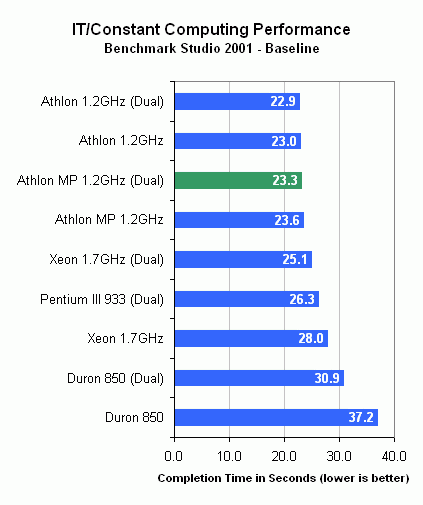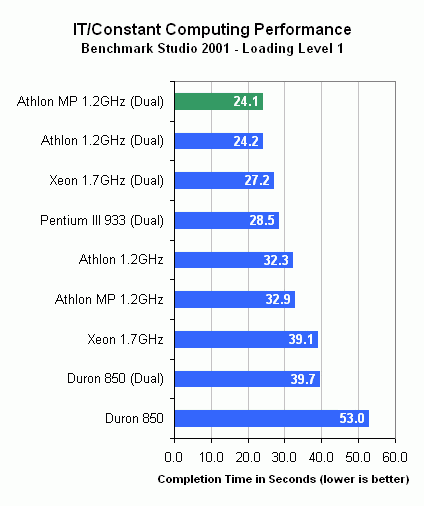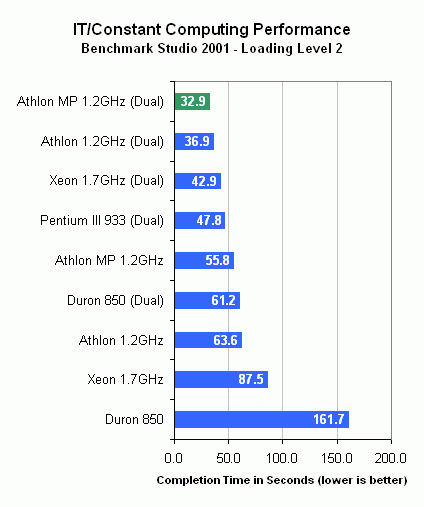AMD 760MP & Athlon MP - Dual Processor Heaven
by Anand Lal Shimpi on June 5, 2001 12:00 PM EST- Posted in
- CPUs
IT/Constant Computing Performance
We've been preaching about CSA Research's Benchmark Studio 2001 for a few months now, and the benchmark has gotten even better. In an effort to simplify the benchmarking process, CSA Research has built in various loading levels that can be used to stress the system. As you will remember from our other reviews using Benchmark Studio, the benchmark measures performance in a Constant Computing environment. In such an environment a user may be connecting to an exchange server to check email, pulling data off of the company's database, and streaming video off of an intranet server all while working on a Word document or creating a Power Point presentation. This type of a situation is what Benchmark Studio 2001 measures performance in by using stressors to simulate all of these tasks in the benchmark. As you can tell, the idea of Constant Computing is definitely far beyond that of a basic office PC; luckily this is another area where MP systems can be of some use.
We benchmarked in three separate configurations; the first is baseline office performance with no additional loading tasks working in the background. The second configuration is with the database, email and media player stress simulators all set to the lowest loading level and the third test setup is with all of the stress simulators set to the second highest loading level. The office benchmark scripts being executed while all of these loading simulators are being run never change, and performance is measured as a function of time in seconds.
With no major stress being placed on the system, the Athlon MP isn't able to offer any performance advantage over the Athlon and there is really no benefit to going to dual processors. The Xeon gets a bit of a performance boost since the single processor is already lagging behind in terms of office performance (high branch mis-predict rates causing the penalties associated with a long pipeline to appear), but for the most part, you shouldn't be considering a multiprocessor system if all you're going to be running is Word, Excel and PowerPoint.
Turning things up a notch immediately shifts the standings around. For one thing, almost all of the dual platforms rise to the top of this pot with the exception of the Dual Duron 850 which is struggling because of a relatively small cache. The performance difference between the top systems is noticeable but still too small to justify preferring one over another.
Increasing the load yet again finally causes the contenders to spread out even more and also illustrates a need for more computing power in a lot of these high-end workstation corporate LAN systems. Keep in mind that you really do have to be running more than just MS Office in order to justify this sort of power; but with multiple video streams being handled by your CPU along with persistent database and exchange server accesses taking place it isn't too surprising that the performance comes out the way it does.
AMD wasn't lying when they said that the Athlon MP core would offer up to a 15% performance improvement over the regular Athlon core. In this case the Athlon MP is able to complete the test in about 10% less time than the regular Athlon (when both are in DP configuration).













0 Comments
View All Comments